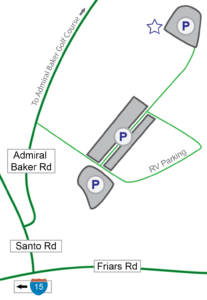October 2018
Honoring Yesterday – Protecting Tomorrow
Vol. 49, No. 10
October Calendar of Events
Thurs., October 4, 11:00am
Coming Home to the
County Operations Center New Crime Lab
5590 Overland Ave., San Diego, 92123
Thurs., October 11, 9:30am
RESDC Board of Directors Meeting
8825 Aero Drive, Suite 205
Thurs., October 18, 9:00am
SDCERA Board of Retirement Meeting
2275 Rio Bonito Way, Suite 200
Sat., October 20, 6:30am check-in
Walk4ALZ San Diego
Balboa Park, 2131 Pan America Plaza, San Diego, 92101
Tues., October 23
RESDC Health Fair Picnic
Admiral Baker Field
2400 Admiral Baker Rd, San Diego, 92124
10:00am. Lunch served from 11:30am – 12:30pm.
![]() View the NETWORK
View the NETWORK
as a printable PDF
Are you on social media?
Stay connected with us!
![]()
![]()
![]()
Quote of the Month
“Leave the beaten track occasionally and dive into the woods. Every time you do you will be certain to find something that you have never seen before.”
▪ Alexander Graham Bell
President’s Message
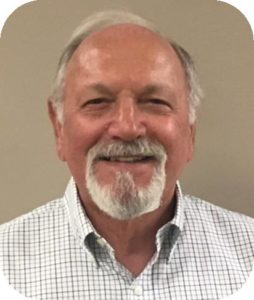
By John J. McTighe
As usual, October is going to be a busy month for RESDC. We start off this month with our annual Coming Home event on Thursday, October 4th at the brand-new San Diego County Crime Lab, and we have our annual Health Fair Picnic at Admiral Baker Field on Tuesday, October 23rd.
In between, several of our board members will be joining Executive Director Mark Nanzer and I at the biannual California Retired County Employees Association (CRCEA) conference in Marin County where we will interact with retirees from the 19 other counties that are members of this statewide association. This will be the last conference before we host the one here in San Diego next April. We’ll be paying particular attention to ways we can make our conference stand out for the attendees from up and down the state. (If you’d like to help with the conference and haven’t let our office know yet, please do so now.)
One thing special we will be doing at the April 2019 CRCEA conference is celebrating 50 years since CRCEA was formed at the initiative of some RESDC members here in San Diego.
Also, in October, Team RESDC will be walking to raise funds to advance the fight against Alzheimer’s Disease in the annual Walk4ALZ on Saturday, October 20, 2018 in Balboa Park. Please consider signing up for our Team RESDC at www.resdc.net/community-events and clicking on “Team RESDC on the Walk4ALZ website.” Even if you can’t join us for the walk, please consider donating for our fundraising effort. Click here to read more about Walk4ALZ.
Our general membership meeting in August was one of the most informative meetings we have held in a long time. Not only was it held at a beautiful facility at St. Paul’s Plaza in Chula Vista, but we heard from three outstanding speakers. The first speaker was our hostess, Mary Johnson, of St. Paul’s who gave us a good description of the services and facilities operated by St. Paul’s for seniors throughout the San Diego region. She was followed by the first of our two featured speakers, Pat Mosteller, who teaches brain fitness classes for those 55 and older for the San Diego Continuing Education division of the San Diego Community College District. Pat did a great job of telling us about brain fitness and how we can train our brains to function more effectively as we age.
Our second featured speaker was Joaquin Anguera, a fellow San Diego County retiree from Aging and Independence Services who has been teaching classes on aging at San Diego State University for many years. Joaquin spoke to us on the topic of “Celebrating Aging” and made us aware of the research and science behind aging. He emphasized many of the myths associated with “ageism,” and cautioned us not to fall into the traps of using language that demeans or devalues older people, especially ourselves.
I’m excited that this month we have a special feature of The NETWORK that includes interviews held with the four candidates for County Supervisor Districts 4 & 5 who are standing for election on November 6th. Mark Nanzer, 2nd Vice-President Chris Heiserman, and I personally interviewed Judge Bonnie Dumanis and Nathan Fletcher for District 4, and Michelle Gomez and Mayor Jim Desmond for District 5. Each candidate was provided with a list of the questions ahead of time, so they could have a chance to be aware of what our concerns were. We recorded the interviews, then prepared the written summary of the interviews which you can read beginning on page 5. By policy, RESDC does not endorse candidates for political office, but we do want to provide our members with information you might find useful in casting your ballots. I’d appreciate hearing back from our members on whether this new feature is of help to you. ◾
San Diego City Retirement:
A Bit of a Scrum Across Town
By Stan Coombs
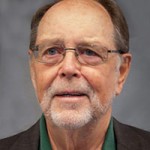 Most locals noted it, particularly public retirees. But the subject is worth revisiting. On June 5, 2012 voters in the City of San Diego approved ballot Proposition B with nearly two-thirds of the votes cast.
Most locals noted it, particularly public retirees. But the subject is worth revisiting. On June 5, 2012 voters in the City of San Diego approved ballot Proposition B with nearly two-thirds of the votes cast.
It wasn’t brain surgery. The idea behind Proposition B was to convince voters that city retirement was too rich and reduce city costs by reducing employee benefits. The mechanism chosen was to eliminate defined benefit retirement for newly hired employees, except new police officers, and replace it with a defined contribution arrangement. That, of course, pretty well eliminated professional investing of retirement funds, predictable pension levels and the likelihood employees save enough to last a lifetime.
Proposition B also froze city salary levels for six years, through June 2, 2018, capped city retirement contributions, restricted police benefit calculations and made procedural changes.
The City estimated costs of $58 million over 30 years to make the change, while proponents claimed more than $2.5 billion in savings. Employee groups argued that a defined contribution arrangement would be inadequate, and dumping defined benefit retirement, the norm in the public sector, would disadvantage the City when they compete for qualified workers.
But, things haven’t gone well for proponents. Former San Diego Mayor Jerry Sanders announced his sponsorship of Proposition B as a private citizen promoting a citizen’s initiative, not officially as Mayor. He claimed there was therefore no city obligation to meet and confer with unions about the measure, as otherwise required by the California Meyers-Milias-Brown Act (MMBA). Former City Councilmen Kevin Faulconer and Carl DeMaio joined him in his promotional efforts.
The Meyers-Milias-Brown Act, legislated in 1968, is the legal “Bible” for California public employment. Section 3505 clearly states:
“The governing body of a public agency, or such boards, commissions, administrative officers or other representatives as may be properly designated by law or by such governing body, shall meet and confer in good faith regarding wages, hours, and other terms and conditions of employment with representatives of such recognized employee organizations, as defined. . .and shall consider fully such presentations as are made by the employee organization on behalf of its members prior to arriving at a determination of policy or course of action.” It goes on to carefully define “meet and confer,” and how it must be undertaken.
Labor groups filed an unfair labor practices complaint with the Public Employment Relations Board (PERB), and tried, but failed, to get courts to withhold the measure from the ballot and prohibit implementation until the complaint was resolved. PERB eventually ruled that city employee rights had been violated due to the lack of meet and confer, and ordered restitution to those impacted.
The PERB ruling was appealed and on April 11, 2017 a California Appeals Court agreed with the City. They annulled the PERB ruling. The City had no duty to meet and confer in a citizen’s initiative process. The Mayor’s promotional involvement was apparently immaterial.
The matter was then appealed to the California Supreme Court, which on August 2, 2018 unanimously reversed the appellate ruling. They said their decision rested on the Court’s and PERB’s respective roles in interrupting public labor statutes and whether the involvement of government officials in the citizen’s initiative process creates a duty for agencies to meet and confer (?)
The Supreme Court scolded the Appeals Court. “PERB’s ruling is not clearly erroneous,” they said. “To the contrary, it is clearly correct.” “Allowing public officials to purposefully evade the meet and confer requirements of the MMBA by officially sponsoring a citizen’s initiative would seriously undermine the policies served by the statute. . .”
They noted that courts had long given PERB findings deference, said that the Meyers-Milias-Brown Act is within PERB’s statutory authority, and that in such matters PERB findings “carry the authority of an expertise which courts do not possess and therefore must respect.”
The Court further ruled the Mayor didn’t act as a private citizen. He used powers and resources of his office to promote a ballot proposition affecting terms and conditions of employment, signed the ballot arguments in favor, as “Mayor Jerry Sanders”, and incurred the obligation to meet and confer. The State Supreme Court ordered the Appeals Court to find an appropriate judicial remedy.
Since Proposition B was left in place until the Appeals Court acts, current Mayor Falconer proclaimed it remains in full force and effect. Labor groups say the Court reverted back to the PERB decision, including PERB’s mandate to pay city employees all lost compensation, and that remuneration must cover the entire six years the initiative has been in effect.
Some 4,000 employees have been hired since Proposition B happened, we are told, which could produce remuneration costs as high as $100 million.
It’s unclear how this retirement predicament will unwind, but rumors have it that the City Attorney may appeal to the U.S. Supreme Court. Interestingly, on April 9, 2018 The San Diego Union Tribune reported the City Council’s approval of 2% to 30% salary increases for 600 “certain positions,” neatly coinciding with the end of the six-year prohibition against salary increases in Proposition B, and suggesting more increases were likely. City officials indicated that those special salary adjustments were needed to alleviate recruiting and retention problems. ◾
Coming Home
To the New San Diego County
Sheriff’s Crime Laboratory
When
Thursday, October 4, 2018 at 11:00am
Where
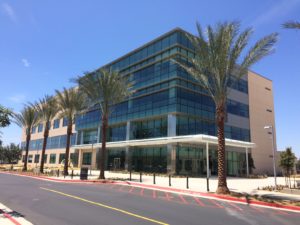 San Diego County Sheriff’s Crime Lab
San Diego County Sheriff’s Crime Lab
County Operations Center
5590 Overland Ave., San Diego, CA 92123
What
Our annual “Coming Home” event invites retired employees of San Diego County to celebrate County sites. On October 4th, we invite you to join your fellow RESDC members in “coming home” to the County’s new Crime Lab.
Event Highlights
11:00 am – Reception, light hors d’oeuvres and refreshments available
11:20 am – Welcoming Remarks by RESDC and County of San Diego Undersheriff Mike Barnett
11:35 am – Introduction & Overview of the Crime Lab by Mike Grubb, Sheriff’s Crime Laboratory Director
12:00 pm – Guided Tours
RSVP
Due to an overwhelming response to this event, we are at capacity and are no longer accepting RSVPs. Attendance without an RSVP will be on a standby basis only, and entrance to the event is not guaranteed. If you have questions, please call the RESDC office at 619-688-9229. A Government issued photo I.D. is required to enter the facility. This is a FREE event. RSVP is requested: online by clicking here and following the steps, or by calling (619) 688-9229. To expedite check-in at the event, please provide all attendees’ names.
Directions
We recommend parking in the structure at the northeast end of the COC campus. Park in any green visitor space in the garage for 3-hour parking, or any unmarked space for no time limit. The Crime Lab is in the building adjacent to the Registrar of Voters. Click here to view a map of the County Operations Center and parking.
- From 163, exit east onto Clairmont Mesa Blvd. and turn left on Ruffin Rd. Turn left onto Chesapeake Dr. The parking structure entrance will be on the left.
- From I-15, exit west onto Clairemont Mesa Blvd. and turn right on Ruffin Rd. Turn left onto Chesapeake Dr. The parking structure entrance will be on the left.
- From 52, exit south onto Kearny Villa Rd., which almost immediately becomes Ruffin Rd. Turn right on Chesapeake Dr. The parking structure entrance will be on the left. ◾
 Open Enrollment for RESDC Benefit Plans
Open Enrollment for RESDC Benefit Plans
Dental, Vision, ID Shield, Legal, Pet, Travel, Accident, and More
The 2019 Open Enrollment is fast approaching. Around the beginning of November, you should receive your 2019 RESDC Benefits Guide. This guide lists the benefit plans available exclusively to RESDC members. Plans available include two extremely high benefit level dental plans, two vision plans, legal, ID shield, pet, travel, accident, hearing aids, and more.
For RESDC members interested in enrolling, the deadline is November 30th. Once you receive your benefits packet, please don’t delay. The deadline for dental enrollments is strictly enforced. If you are currently enrolled in any of the RESDC benefit plans, your coverage will automatically continue for 2019. You do not need to do anything if you are not making changes to your coverage.
At the RESDC Health Fair Picnic, on Tuesday, October 23rd, our benefit plans administrator, Pacific Group Agencies, will be in attendance and will be able to answer your questions. ◾
Pension Facts
Columnist Sees Pension Deception in Tax Measures
Pension Facts at a Glance
$13.8 million
In August the Board of Supervisors sent a separate contribution to SDCERA toward the pension plan’s unfunded actuarially accrued liability.
By Chris Heiserman, Director
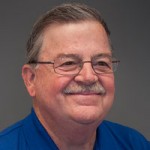 In an op-ed column published in the Union-Tribune after the June Primary, veteran state government watch dog reporter Dan Walters claimed that state and local elected governments were hiding the real reason for initiating numerous tax raising ballot measures this year. He believes some of the revenue from these new taxes and fees will be applied to the portion of future retirement benefits earned by California public employees that remain underfunded.
In an op-ed column published in the Union-Tribune after the June Primary, veteran state government watch dog reporter Dan Walters claimed that state and local elected governments were hiding the real reason for initiating numerous tax raising ballot measures this year. He believes some of the revenue from these new taxes and fees will be applied to the portion of future retirement benefits earned by California public employees that remain underfunded.
Walters wondered why local cities, school districts, and other agencies placed 111 new tax measures on the June ballot when California’s economy was booming. He said local officials don’t want to be quoted but have told him they need more revenue to meet escalating bills from the state’s two largest retirement systems – California Public Employees Retirement System (CalPERS) and California State Teachers Retirement System (CalSTRS). He said local agencies, advised by expensive campaign “consultants”, promised that new tax revenue would go for police, fire, and parks without mentioning the looming pension obligations.
A large majority of the June tax hikes were approved by voters (76%) and Walters predicts that local governments will use similar campaign tactics, which he describes as “propaganda,” to again deceptively promote passage of new taxes and fees in the November 6th general election.
He praises his former employer, The Sacramento Bee, for clearly pointing out the negative effect of that city’s rising pension costs; and he singles out the City of Lodi in San Joaquin County for “doing it the right way”, telling voters it needs more money and placing blame directly on employee retirement costs for stretching the city budget to the limit.
Okay. TIME OUT. Let’s take a look at Mr. Walter’s conspiracy theory that elected officials are really just trying to find dollars for pensions with all these taxes, fees, and charges. First, a healthy state economy would not translate automatically into problem-free budgets for the state’s hundreds of cities, counties, school, and other special districts. There will always be local service needs to finance separate from any long-term pension plan contribution requirements.
Second, within the June ballot financial measures for cities, counties, and special districts there were 31 needing a majority vote and 28 special taxes, which required two-thirds approval. Special taxes would be earmarked for a specific purpose and could not be utilized for retirement costs. Among the 27 of 31 majority vote measures that passed were 13 cannabis business taxes. This seemed to be a popular new avenue for raising general purpose funds, rather than some nefarious scheme to secretly pay for employee retirement benefits.
Third, Walters suggests that “simple arithmetic” comparing the expected revenues from a jurisdiction’s new tax hike to its long-term pension obligations would prove meaningful; however, since the calculations indicate that the long-term retirement costs far exceed the near-term tax measure revenues, it only shows there is no correlation between the two — like comparing apples and oranges.
Fourth, Walters apparently hasn’t noticed that numerous jurisdictions in California are “doing it right” in addressing their employee retirement obligations. Some counties and cities, including Lodi, are creating pension stabilization trust funds, paying down their unfunded liabilities faster than required to save money, and negotiating new labor agreements with workers to improve the long-term health of their retirement plans. ◾
 Members Share
Members Share
By Deborah, Mecum, Probation Department, Retired 2002
My travel partner, Mary, and I have taken many trips around the world. In 2014, we took a three-week adventure, first flying to Santiago, Chile. We added seeing Valparaiso and then flew to Easter Island for a few more days. Back in Santiago we joined a tour group and traveled to Torres Del Paine Park in Patagonia where we stayed in yurts. In Punta Arenas, we left our tour group and rode a six seater jitney to Ushuaia in Argentinean Tierra Del Fuego, crossing the Strait of Magellan to get there. After visiting Ushuaia for several days we headed home, landing in Buenos Aires to change airports across town. We used this time to take a city tour with drop off at the international airport there.
This trip was one of our best adventures as we went to many destinations and did many memorable things. It was a wonderful time and I recommend that everyone travel to remote destinations whenever they can. ◾
Recent Events
- SDCERA Reports Preliminary Investment Returns For Fiscal Year 2018. SDCERA reported a preliminary investment return of 7.9% for the fiscal year ending June 30, 2018 (FY 2018). As of June 30, 2018, SDCERA’s assets under management (AUM) were $12.3 billion, an all-time high.
- State Public Retirement Systems Fact Sheets. In partnership with AARP and National Retired Teachers Association, the National Institute on Retirement Security has developed a series of state-by-state infographic fact sheets regarding the public employee and teacher retirement systems across the country. These fact sheets present a snapshot of these retirement systems along with key data from NIRS research and other sources. To access the fact sheets, visit: https://www.nirsonline.org/resources ◾
Board of Supervisors Candidates Districts 4 and 5
San Diego County Board of Supervisors candidates running for the Fourth and Fifth District seats in the November election were interviewed by RESDC Board members about their views on retirement issues. Their responses to a set of questions, and additional comments they offered about their goals for the County, are summarized here. Candidate responses have been edited for space restrictions.
Bonnie Dumanis District 4
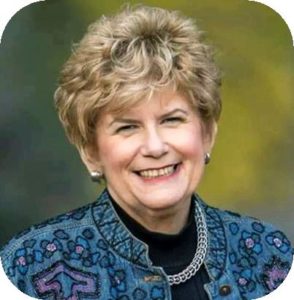 1. Do you have any thoughts about the viability of the County’s existing defined benefit retirement plan?
1. Do you have any thoughts about the viability of the County’s existing defined benefit retirement plan?
I think the County has actually done a good job in maintaining the pension so that it doesn’t get too low compared to the unfunded liability. Also, I think they have taken a look at increasing the assumptions because of age and reducing the expectations of what they get in terms of the rate of return. I remember when I started as the District Attorney the rate was 8%. Then it was reduced down to 7.75, 7.5, and now at 7.25. But I think the San Diego County pension is one of the best ones in terms of how they’ve taken care of it. They’ve had to comply with the State law and did a pretty reasonable job of how they did that.
2. What is your view of replacing defined-benefit retirement plans with 401(k) style defined-contribution retirement plans for public employees?
I’m absolutely against it. Although I do need to say I supported the City of San Diego Prop B, but that was different because they did not have a well-maintained pension fund and were looking at some serious problems there. I did feel for law enforcement. It was important not to remove them from the defined benefit plan. I felt that way for firefighters too, but they were left out and people voted for it. And now we see its going to be quite the problem unraveling all that. But in general, I don’t think 401(k)’s should replace pensions. I’ve been a county employee for over 33 years and I mean we all became county employees, in my view, because you gave up the high salaries in order to get more security at the end and everybody else chose to take the higher pay and not necessarily worry about that. Then things changed after the recession because people lost a lot of their money and were upset with those who chose retirement security.
3. What are your views on a potential State constitutional amendment limiting the amount of public employees’ retirement benefits?
I’ve heard about it and am not in favor of it. Every pension system across the state is different in terms of county (1937 Act), city, and others. And then it depends on how well funded each of them are. I really am not in favor, especially if it’s a constitutional amendment which is really hard to get rid of once established.
4. The County created a new pension class (Tier C) for new hires based upon a 2012 state law. Those workers earn lower benefits than their “legacy” counterparts in the work force. The Board recently created another new lower pension class (Tier D) for new hires. What impacts do you think this will have on the recruitment and retention of county employees and the delivery of public services?
I wasn’t in favor of Tier D and I argued that it would have an impact on the quality of the individual and how long they would stay. You know, they capped how much you can receive in a pension, for lawyers in particular. For a lawyer to work 33 plus years like I did and to get capped at a certain amount, I would expect that a lawyer might come in get trained and use that training to go out and make a lot of money. I think the same for deputy sheriffs and any other employee making a higher salary. I do think it will impact recruitment all around.
5. The Board of Supervisors has adopted a policy that allocates property tax revenues resulting from increases in assessed valuation beyond the County budget estimates to pay down the pension fund unfunded liability. What are your views on this policy?
I think it’s a wonderful idea. It’s going to protect our investment. We want to keep a sound pension fund.
6. What else would you like the Retired Employees of San Diego County to know about your views?
I think it’s clear my views are grounded in being a county employee. I have been an employer as the DA and I know I have the support of my investigators, attorneys, and clerical staff. I’ve done everything possible to be good to the employees. You know, people get into union representation, and I always say, it’s not pro-union/anti-union, it’s pro-employee. That’s the important thing. I’ve put gyms in every building; provided ergonomic chairs and desk work stations that go up and down. I have always fought for them for their salaries, too. Also, I’ve learned so much through all my County experience, I think I can bring a lot to the table and hit the ground running and begin to make some changes like in the areas of homelessness and housing.
Nathan Fletcher District 4
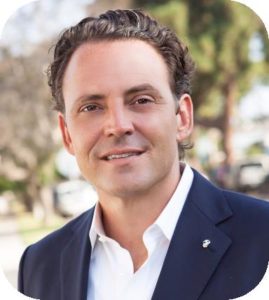 1. Do you have any thoughts about the viability of the County’s existing defined benefit retirement plan?
1. Do you have any thoughts about the viability of the County’s existing defined benefit retirement plan?
I believe the County’s existing defined benefit retirement plan is in a strong position. When you look across the State of California, the average funding level is about 70%. I believe our plan is around 78-79% funded. It has over $13 billion in assets. They have made multiple adjustments, I believe three or so adjustments from an assumed rate of return from 8.25 down to about 7.25, which I believe based on current market conditions is appropriate, conservative, but appropriate. When you look at the County’s unfunded liability of $3 billion, they’re making steady progress in drawing that down. I think its important to note, that a pension fund that is less than 100% funded, does not mean that the fund is unhealthy. Assuming people continue to pay into it, there is kind of a false narrative out there that it has to be 100% funded. It is important to understand a healthy, vibrant, well-managed system is what I believe we have and I think it’s getting better. If elected Supervisor, I will continue to push to ensure the viability and strength of the fund.
2. What is your view of replacing defined-benefit retirement plans with 401(k) style defined-contribution retirement plans for public employees?
I’m opposed to it. When you have someone who is willing to serve the public and they’re willing to make a commitment to serve the public, we are making a commitment to them as well. If they pay into the system and we pay into the system, then they reach retirement age and they’ll have the dignity of a healthy retirement. I think 401(k)’s are wealth accumulation, not lifestyle replacement. I don’t think most Americans are prepared for retirement age. I think a lot of Americans are going to face horrible choices of how many years they think they can live in drawing out of these things (401k’s). I think ultimately, it’s going to have to be government coming in and picking up the slack because as a country we’re never going to allow seniors to die in the streets.
3. What are your views on a potential State constitutional amendment limiting the amount of public employees’ retirement benefits?
Having lived through Measure B and the Carl DeMaio approach to the City of San Diego, I think there are some important lessons that I would hope that all of California would take away. It is a false choice that gets presented to the public. You can have a well-run, well administered pension plan that honors the dignity and work of our public service workers and you can do that in a responsible way. I will fight fiercely to protect our workers’ benefits and the dignity of the retirement they are entitled to and which they pay into over the course of their lifetime employment. These efforts are something we have to be mindful of and guard against.
4. The County created a new pension class (Tier C) for new hires based upon a 2012 state law. Those workers earn lower benefits than their “legacy” counterparts in the work force. The Board recently created another new lower pension class (Tier D) for new hires. What impacts do you think this will have on the recruitment and retention of county employees and the delivery of public services?
I wasn’t supportive of Tier D. I didn’t think it was necessary to create another lower tier pension level for new hire workers. As far as the impact on recruitment and retention, we know anecdotally from other jurisdictions, it has an impact. The employees that you tend to lose are the employees you tend to want to keep. Some of the most pronounced examples of this happen in public safety where they are very mobile and very in tune to what the benefits are. I think the City of San Diego is a big red flag for what can happen in that arena as a case study. When the City didn’t appropriately compensate their public safety workers, they left and then the city spent tens of millions of dollars replacing them. I don’t know that continuing to ratchet down the benefit is the most prudent approach in terms of our commitment to not only the morale of the workforce, but having the best and brightest and having them fully committed. We expect tremendous work out of our county workers, expect them to work hard and to serve the public in an exemplary way and I think they need to be compensated appropriately for that.
5. The Board of Supervisors has adopted a policy that allocates property tax revenues resulting from increases in assessed valuation beyond the County budget estimates to pay down the pension fund unfunded liability. What are your views on this policy?
I think it’s okay for now. I think recently they made about a $13 million payment. To the extent it helps bring down that unfunded liability, I think it ensures a sense that the fund is healthy and solvent. There could come a time where we may have to have a discussion about how those resources are most appropriately allocated in order to fulfill the mission of county government, but I would say for now it’s fine.
6. What else would you like the Retired Employees of San Diego County to know about your views?
I want to mention that I was really bothered by the fact that the Supervisors were willing to vote themselves a 19% pay raise. Supervisors giving themselves a pay raise while not giving one to every county worker was immoral and was wrong. I think it is a mindset and mentality that needs to change. Additionally, I’ve always been committed to service, I’ve been willing to demonstrate leadership, tackle difficult issues and drive solutions. I think right now we have a Board of Supervisors that minus one have all been there for decades. They are all of the same political party and they all tend to tow the same line. I think someone needs to go into county government and really start asking some difficult questions. How is it that you had $150 million for a Chargers stadium, but you have a fraction of that to tackle what is a horrible housing crisis? Why is it you have somewhere around the range of one-half the number of public health nurses that you ought to have? Why is it that the Rosecrans inpatient psychiatric unit is licensed by the state of California for 109 beds and at a time where we have a serious mental health crisis, you only operate 40 of those beds? There are real and substantive things where the county can make a tremendous impact.
You have programs that we know work. Needle exchange programs work. They have been public health success stories for the last 20 years. But yet the County of San Diego refuses to accept state allocated money for San Diego County. So, our residents are paying their taxes, the state collects, they then send it back to counties to administer life-saving programs except our county says “No, we don’t want it.” We are always going to be fiscally responsible, do evidence-based things that are measurable. We’re going to maintain appropriate reserves to make sure we have a functioning government. But I think it’s time…when we say “the noblest motive is the public good,” we really adhere to how we do the greatest public good.
Jim Desmond District 5
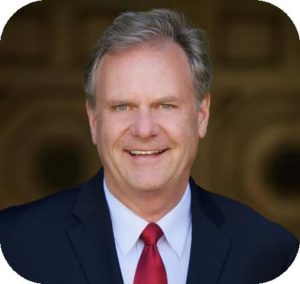 1. Do you have any thoughts about the viability of the County’s existing defined benefit retirement plan?
1. Do you have any thoughts about the viability of the County’s existing defined benefit retirement plan?
I’m not here to turn the county upside down or rock the boat. The defined benefit program, funded at 77% is probably a floor that I’d like to be funded at. 75% would be a bottom. It needs to be a sustainable system. We need to have the money in there to keep it sustainable. I want to see a sustainable pension system for everybody.
2. What is your view of replacing defined-benefit retirement plans with 401(k) style defined-contribution retirement plans for public employees?
I don’t think we need to do that at this point with the county. It’s a tool in the toolbox if things go haywire but I think the county has done a good job, been fiscally responsible, and kept the pension funded. I’m not going to instigate or be in favor of putting together a 401(k) plan to replace the defined benefit pensions. I don’t think it’s needed right now. There are other pressing issues at the county.
3. What are your views on a potential State constitutional amendment limiting the amount of public employees’ retirement benefits?
I haven’t seen what anyone’s proposed. I’m familiar with Governor Brown putting PEPRA (Public Employees’ Pension Reform Act) in place, with limits and restrictions for new hires after 2013, which I thought were fairly reasonable. I think PEPRA is fine for now. We have seen mechanisms put in place in cities like San Marcos to provide the funding to cover promised retirement benefits. Instead of putting extra money in the pension fund to gradually address unfunded liabilities, some cities are setting aside dollars in a trust fund where it can be managed to stabilize pension contributions. I’ve always paid bills on time, made sure we had money to pay the bills. As long as we can keep a sustainable system going, I’m not here to rock that boat.
4. The County created a new pension class (Tier C) for new hires based upon a 2012 state law. Those workers earn lower benefits than their “legacy” counterparts in the work force. The Board recently created another new lower pension class (Tier D) for new hires. What impacts do you think this will have on the recruitment and retention of county employees and the delivery of public services?
It’s almost a necessary evil, I think, for some of these different tiers to keep it sustainable. If everyone was still at Tier A I don’t know if it would be sustainable. It’s a balancing act. You will have issues with recruitment and retention of county employees. But I still feel that people will still ensure the delivery of public services.
5. The Board of Supervisors has adopted a policy that allocates property tax revenues resulting from increases in assessed valuation beyond the County budget estimates to pay down the pension fund unfunded liability. What are your views on this policy?
Sounds great. We need to pay down that unfunded liability. I think it’s a good idea. Again, being funded a 77% would probably be a floor for me. I’m on board with the concept of paying down the unfunded liability, but it can be done in many different ways.
6. What else would you like the Retired Employees of San Diego County to know about your views?
I’m in my twelfth year and termed out as the Mayor of the City of San Marcos. Previous to that I was on the City Council for two years. We’ve grown San Marcos from a city of 60,000 to about 90,000 now. We’ve got a good economy, we’ve embraced our educational assets, put a lot of focus on our infrastructure. I’m a pilot for Delta Airlines and have been there for 32 years. I still work there two-thirds time. I’ve been on the San Diego Airport Authority Board for about ten years and chair the transportation committee on the SANDAG Board.
What got me here was volunteering. The more you volunteer, the more responsibility people will give you. I started my own business and got involved with the Chamber of Commerce, received a degree in engineering from San Diego State. I like learning how things work and get done, or not done in government and try to make them better. This is a way for me to give back. I’ve learned a lot as Mayor and through my work on various boards and have great working relationships with people at the county. So, if the folks in the county are willing to have me serve, I’d be happy to do it. I’m very open; my card has my cell phone number on it. I’m a fiscal conservative, very big about spending only what we have. I’m a champion of strong reserves. Also, public safety and infrastructure are kind of my main pushes right now and we need more housing. We have issues including housing and homelessness that need to be dealt with. I’m a fiscally responsible guy who wants sustainable plans for everybody and there are many different ways to achieve that. I’m not going there to change everything.
Michelle Gomez District 5
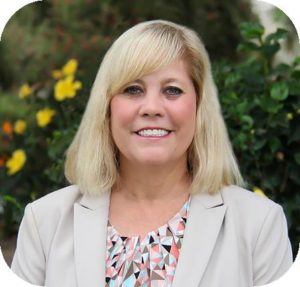 1. Do you have any thoughts about the viability of the County’s existing defined benefit retirement plan?
1. Do you have any thoughts about the viability of the County’s existing defined benefit retirement plan?
I think it’s viable, right now, but I do think it needs constant monitoring. I think we need to be watching it to make sure it doesn’t slip away. But right now I do believe it is within the viabilities standard.
2. What is your view of replacing defined-benefit retirement plans with 401(k) style defined-contribution retirement plans for public employees?
I’m against that. I think it’s a mistake. I think Defined Benefits are the only way we can assure economic security. Not every business offers 401(k) and ones that do, you don’t know when you put something in what you’re really going to get at the end of the day. With defined benefits you know exactly what the expectation is, you have a way of planning for your future, and knowing exactly what you’re going to be bringing home each day. I don’t believe that 401(k)’s offer a sustainable retirement future.
3. What are your views on a potential State constitutional amendment limiting the amount of public employees’ retirement benefits?
I don’t think we should be doing anything that would limit benefits for retirees. We need to ensure that our retirees are able to live a sustainable life, one that they are accustomed to. And if we are reducing benefits, we are restricting that. And by restricting that, we are opening the door to people that are dependent on state services, such as food stamps, welfare and things of that nature, because Social Security is never going to cover the whole net and so I am completely opposed to any kind of restriction in retirement. The other side of that, if you have a retirement check, the likelihood is you’re going to be spending that check in the community, so it’s going back into our economy.
4. The County created a new pension class (Tier C) for new hires based upon a 2012 state law. Those workers earn lower benefits than their “legacy” counterparts in the work force. The Board recently created another new lower pension class (Tier D) for new hires. What impacts do you think this will have on the recruitment and retention of county employees and the delivery of public services?
My opinion is pensions are a part of bargaining process and if we are using that as part of bargaining then a lot of times employees are taking less wages now to pay into pensions. My biggest concern is that we’re not going to have equal pay for equal work. Because if one employee is under a Tier A defined benefit and one is under Tier D, they’re doing the same job, but they’re not getting equal benefits. That’s a big concern for me and I think that’s going to show in motivation because employees are going to know their co-workers have been there a long time and have been locked into a higher benefit level. I don’t believe we can ensure we are going to get the same level of work from every employee who doesn’t have equal pay for equal work. I think that’s going to be a big problem in the future.
5. The Board of Supervisors has adopted a policy that allocates property tax revenues resulting from increases in assessed valuation beyond the County budget estimates to pay down the pension fund unfunded liability. What are your views on this policy?
I’m concerned about us getting locked in to any policy that’s restrictive. If, let’s say, we have a healthy stock market and reserves are high and the money is there, are we restricted to keeping it there? Can we allocate those funds out if we have a big wildfire and have healthy reserves/excess dollars? Can that money be used to repair damage in a fire situation? There needs to be flexibility, oversight, compliance, and audit processes to ensure the funds are being used appropriately.
6. What else would you like the Retired Employees of San Diego County to know about your views?
First, I like to say I’m a retired union worker, local UFCW 324 out of Buena Park. I stand with labor and think it’s important we stand with labor, that we have county employees that are making a livable wage and that they have benefits that can sustain them in retirement. I also think it’s critical that we are filling vacancies at the county level when vacancies become available because we don’t want to be overworking any employees and we also need to make sure that we have the level of services that consumers should expect.
Aside from that, I want to focus on affordable housing. What I mean by affordable and attainable housing is smart growth and smart development. I don’t believe we should be developing in areas that don’t have the infrastructure to support it or that are in high propensity fire zone areas. I think we need to be very smart about developing and building near transportation hubs and in the cities where it makes the most sense.
In addition, I’m really passionate about addressing our homeless crisis. I think we need to start with the housing first model and get our homeless population into housing then address those root causes, whether that is job placement, job training, substance abuse and other root causes that can be addressed after we get them into housing.
Mass transportation and transit is something I think we need to be looking at. San Diego was never really built for mass transit, so it’s difficult. It’s going to be a long and painful process to get us there, but we’re going to need to do that if we are going to be able to develop outside our cities.
I’m very much concerned about our environment and environmental issues and food waste. We waste so much food in this county and across the nation and if we can find solutions to that, we wouldn’t have a hunger issue. ◾
 Join Team RESDC in 2018 Walk4ALZ San Diego
Join Team RESDC in 2018 Walk4ALZ San Diego
October 20, 2018
By Laurie Pennington, Member
 I am honored to be once again asked to act as the Team Captain for Team RESDC for the 2018 Walk4ALZ in Balboa Park.
I am honored to be once again asked to act as the Team Captain for Team RESDC for the 2018 Walk4ALZ in Balboa Park.
Today more than 84,000 San Diegans live with Alzheimer’s disease, and another 200,000 care for them locally. I’m sure it’s touched your loved ones as well. It’s made its way into our family and it’s very emotional watching a loved one lose their memories and struggle with day to day simple tasks and conversations.
Last year, Walk4ALZ raised $650,000 and all the funds raised stayed in San Diego. Last year Team RESDC Raised over $1,200 and we’re hoping to exceed that total and have more walkers on our team this year.
We hope that you’ll consider joining Team RESDC for the walk in Balboa Park on Saturday, October 20th. Simply visit the link provided below and sign up to walk with us and raise donations.
To register, go to: www.resdc.net/community-events and click on “Team RESDC on the Walk4ALZ website.” If you’re unable to participate, please consider making a $35 donation to our fundraising campaign.
 This year my 10-year-old grandson will be joining me in this walk. This will be his first walk and introduction into what these events hold, and the power of joining those with like hearts and the drive to making a change! I’m proud and hope that you’ll gather your loved ones and join us too! Thank you!
This year my 10-year-old grandson will be joining me in this walk. This will be his first walk and introduction into what these events hold, and the power of joining those with like hearts and the drive to making a change! I’m proud and hope that you’ll gather your loved ones and join us too! Thank you!
Walk4ALZ 2018 – Balboa Park:
When: Saturday, October, 20, 2018
Registration and Check-in at 6:30 am. Walk at 8:00am.
Where: Balboa Park, start near the corner of Park and Presidents Way.
2131 Pan American Plaza, San Diego, CA 92101 ◾
 Save the Date
Save the Date
2018 Holiday Luncheon
Thursday, December 13
The 2018 Holiday Luncheon will be held on Thursday, December 13, at the Bahia Resort Hotel, 998 West Mission Bay Drive. Mark your calendars now. The reservation form will be in the November and December issues of The NETWORK. ◾
Annual RESDC Health Fair Picnic
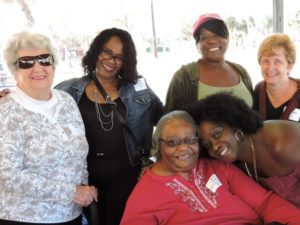 When
When
Tuesday, October 23, 2018, 10:00 am—1:00 pm
Lunch Served 11:30 am—12:30 pm
Where
Admiral Baker Field
2400 Admiral Baker Rd., San Diego, CA 92124 (Map)
(directions listed below)
What
The annual RESDC Health Fair Picnic is an outdoor event with over 20 resource booths related to health and wellness. Enjoy a buffet style barbecue lunch, an opportunity drawing, and mingling with fellow retirees.
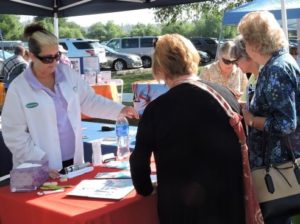 Menu
Menu
Barbecued beef, green beans, baked beans, fruit, coleslaw, rolls, beverages, and dessert.
Sponsored By
Ameritas Dental, Cigna Dental, Health Net, Kaiser Permanente, Pacific Group Agencies, Inc., San Diego County Credit Union, United HealthCare, and My Senior Health Plan.
Registration
EVERYONE, INCLUDING MEMBERS, MUST REGISTER IN ADVANCE.
This ensures we order enough food for everyone and are in compliance with the policy of Admiral Baker Field to not complete financial transactions onsite. Thank you for your cooperation!
RESDC Members: $0
Non-Members: $5
Spouses, guests, retirees who have not joined RESDC, etc. are required to pay $5 each.
Registration forms and payment must be received in the RESDC office by Thursday, October 18. There are no refunds. Name badges and opportunity drawing tickets should be picked up at the Check-In table. They will not be mailed. No pets are allowed at Admiral Baker Field except Service Animals.
Choose Registration Method:
Register by Phone: Call the RESDC Office at (619) 688-9229 during our hours of 9 am – 2 pm Mon-Fri. If you are bringing non-member guests, please have a credit card ready.
Register by Mail: Print and fill out the registration form. Make a check payable to RESDC for $5 per non-member in your group. Mail form and check (if applicable) to RESDC, 8825 Aero Dr., Suite 205, San Diego, CA 92123.
Register Online: Click the green “Register” button. To access the free RESDC member price, use the email associated with your member account. Click “Add guest” to add non-member attendees for $5 each. To pay for non-member attendees, click “Pay Online” and pay with credit card; otherwise, click “Confirm.” To add another RESDC member, please call RESDC at (619) 688-9229.
Register online for Health Fair Picnic →
Directions to Admiral Baker Field
If using Route 15:
Turn East onto Friars Road and left on Santo Road, Right on Admiral Baker Road, and turn right at the next stop sign.
If using Route 8:
Take 8 to Route 15 North, turn East onto Friars Road, left on Santo Road, and Right on Admiral Baker Road, turn right at the next stop sign.
Upon entering the park, there will be signs to direct you. ◾
Welcome New Members
 Connie M. Anguiano* – Health & Human Services
Connie M. Anguiano* – Health & Human Services
Liza M. Baua Rouch* – Health & Human Services
Leticia Bombardier
Yolanda A. Chavez – Health & Human Services
Joseph Cordero – Chief Administration Office
Harold L. Cox – Social Services
Andrew W. Hamilton – Air Pollution Control
Anna L. Holmes* – Sheriff
Maria E. Huber
Velanda K. Joyner – Health & Human Services
Lisa McAvoy-Grover* – Human Resources
Linda A. Read – Health & Human Services
Corinne E. Schwartz* – Public Defender
Mary Jane M. Scott – Health & Human Services
Elaine B. Vassiliou – Health & Human Services
Karen Weeks* – Probation
Richard T. Williams – Agriculture/Wts/Measures
James L. Wilterdink – Sheriff
*Associate Member
The surviving spouse of a member is eligible for RESDC membership. For enrollment assistance, please call: (866) 688-9229. ◾
NETWORK is the official monthly newsletter of the Retired Employees of San Diego County, Inc. (RESDC), a private non-profit organization.
The information printed in the NETWORK is believed to be from reliable sources. However, no responsibility is assumed by the NETWORK for inaccuracies contained herein.
Business and Inquiries: Business matters and address changes may be recorded on our voicemail at any time, call (866) 688-9229. Please spell your name so the correct member record can be located.
Retired Employees of San Diego County, Inc.
8825 Aero Drive, Suite 205 | San Diego, CA 92123
Office Hours: 9 a.m. to 2 p.m. Monday through Friday
TELEPHONE: (866) 688-9229 Toll Free
FAX: (619) 688-0766
E-MAIL: resdc@resdc.net


